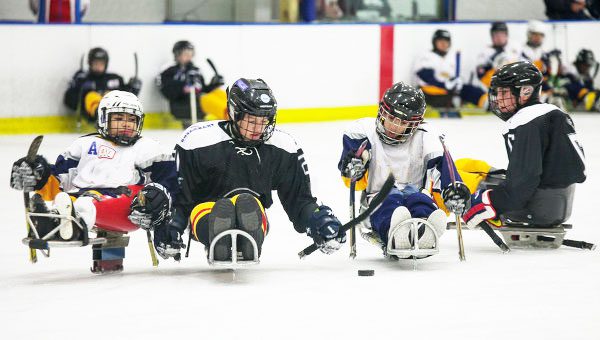
Synthetic ice skating can be a wonderful activity for kids with disabilities, providing them with an opportunity to enjoy the benefits of ice skating in a safe and accessible environment. Synthetic ice is a material designed to mimic the gliding sensation of real ice, allowing individuals to skate without the need for a refrigerated surface.
Here are a few reasons why synthetic ice skating can be beneficial for kids with disabilities:
- Accessibility: Synthetic ice rinks can be set up in various locations, such as community centers or schools, making them more accessible for children with disabilities. They can be designed to accommodate wheelchairs and other mobility aids, ensuring that children of all abilities can participate.
- Safety: Synthetic ice surfaces are generally more forgiving than real ice, providing a safer environment for children with disabilities. The plastic material has a slight resistance, reducing the risk of slips and falls. Ramps or handrails can be installed to assist those with limited mobility or stability. These adaptations can help children build confidence and develop their skating skills at their own pace. Additionally, the friction on synthetic ice is typically lower, making it easier for children to maintain balance and control while skating.
- Adaptability: Synthetic ice skating can be adapted to suit the needs and abilities of children with disabilities. For example, adaptive skating aids, such as walkers or stabilizers, can be used to provide additional support and stability. Skating sessions can also be tailored to accommodate specific physical or cognitive challenges, ensuring that every child can participate and enjoy the experience.
- Therapeutic benefits: Ice skating, whether on real ice or synthetic ice, offers numerous therapeutic benefits for children with disabilities. It can help improve balance, coordination, muscle strength, and cardiovascular fitness. Skating also provides sensory stimulation and can be a fun way for children to socialize and engage with their peers.
- Inclusive Recreation: Synthetic ice skating can be a social and inclusive activity, allowing children with disabilities to engage with their peers and participate in recreational programs or competitions alongside them. It promotes inclusivity and fosters friendships among children of different abilities.
When introducing synthetic ice skating to children with disabilities, it’s important to consider their individual needs and consult with professionals, such as therapists or adaptive sports instructors, who can provide guidance and support. They can help determine appropriate equipment, techniques, and modifications to ensure a safe and enjoyable experience for the children.
Overall, synthetic ice skating provides a fantastic opportunity for children with disabilities to engage in a fun and accessible physical activity, promoting their physical, cognitive, and social development.
#sledhockey #sledgehockey #paraicehockey

